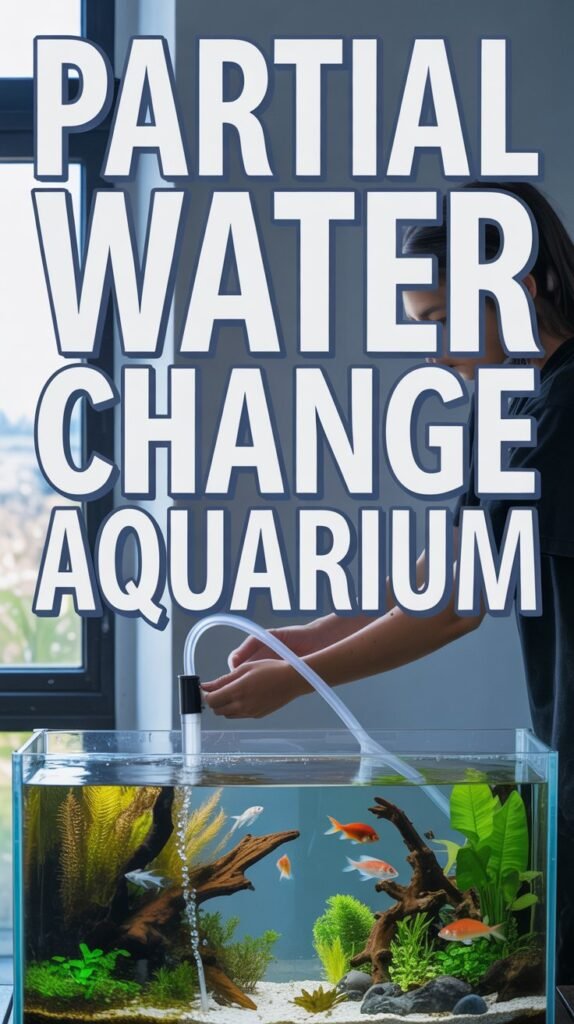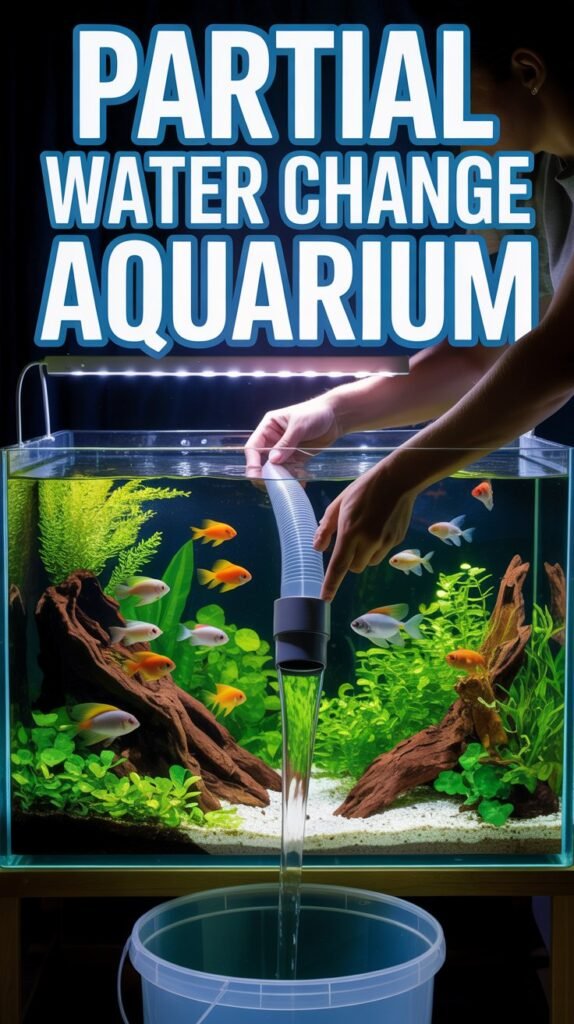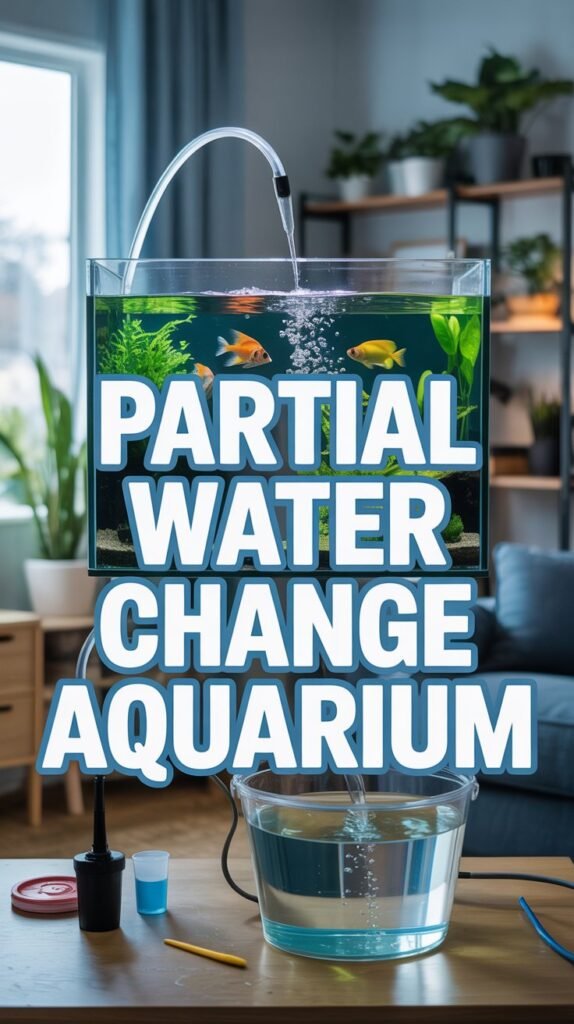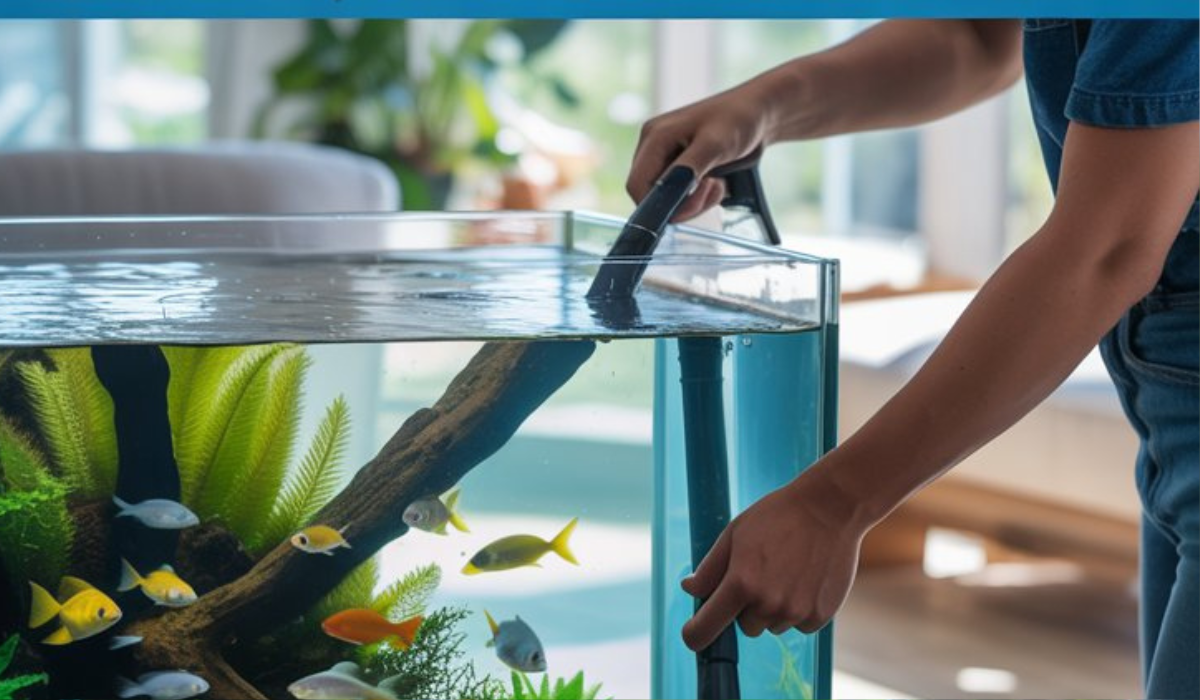Keeping an aquarium clean and balanced is essential for the well-being of fish, plants, and other aquatic organisms. One of the most effective and fundamental maintenance practices is the partial water change. Unlike a 100% water change—which can shock fish and disrupt biological stability—a partial water change helps maintain consistent water chemistry while removing harmful substances from your tank.
In this comprehensive guide, we’ll explore everything you need to know about partial water changes in aquariums, including why they’re important, how often to do them, how to perform them safely, and the common mistakes aquarists make.
What Is a Partial Water Change?
A partial water change involves removing a portion of the aquarium’s water (usually 10–40%) and replacing it with clean, conditioned water. This process helps control waste buildup, stabilize pH, and replenish essential minerals—all without drastically altering the tank’s ecosystem.
The goal of a partial water change is maintenance, not reset. It helps your aquarium remain biologically stable, keeping your fish stress-free and your water crystal clear.
Why Partial Water Changes Are Essential

Even with a high-quality filter system, waste and toxins naturally accumulate over time. Filters can remove debris and convert toxic ammonia into less harmful substances, but they cannot eliminate everything. That’s where partial water changes come in.
1. Reduces Ammonia, Nitrite, and Nitrate Levels
Fish waste, leftover food, and decaying plants release ammonia, which is highly toxic. Beneficial bacteria in the filter convert ammonia into nitrite and then nitrate. Nitrates, while less toxic, can still harm fish if allowed to build up. Regular partial water changes dilute these harmful compounds and keep them at safe levels.
2. Replenishes Essential Minerals
Over time, minerals such as calcium, magnesium, and trace elements become depleted. Fresh water replenishes these minerals, which are vital for healthy fish metabolism and strong plant growth.
3. Stabilizes pH Levels
As organic waste accumulates, it produces acids that can lower your aquarium’s pH. Performing regular partial water changes helps maintain a stable pH, preventing stress or illness in fish.
4. Improves Oxygen Exchange
Clean, well-oxygenated water supports beneficial bacteria and helps fish breathe easier. Stagnant or dirty water can cause low oxygen levels, which can be fatal to aquatic life.
5. Enhances Water Clarity and Aesthetic Appeal
Dirty water not only affects the health of your aquarium but also makes it look unattractive. Partial water changes keep your aquarium looking vibrant and healthy.
6. Strengthens Fish Immunity
Consistent, high-quality water conditions help reduce stress and improve fish immunity. Stress is one of the leading causes of disease outbreaks in aquariums.
How Often Should You Do Partial Water Changes?
The frequency of water changes depends on several factors such as tank size, bioload, filtration efficiency, and the types of fish or plants you keep. However, a good general guideline is:
| Aquarium Type | Recommended Water Change Frequency |
|---|---|
| Freshwater (Community Tank) | 20–25% weekly or biweekly |
| Planted Aquarium | 15–20% weekly |
| Heavily Stocked Tank | 30–40% weekly |
| Saltwater (Reef Tank) | 10–20% weekly or biweekly |
| Nano Aquarium | 20–30% weekly |
For most home aquariums, changing 20–25% of the water every week works best to maintain long-term stability.
How to Perform a Partial Water Change (Step-by-Step Guide)

Performing a partial water change is simple but requires care to avoid shocking your fish. Follow these steps for best results:
Step 1: Gather Your Supplies
You’ll need:
- A gravel vacuum or siphon
- A clean bucket (used only for aquarium maintenance)
- Dechlorinator or water conditioner
- Aquarium thermometer
- Soft cloth or algae scraper
- Towel for spills
Step 2: Unplug Equipment
Turn off your heater, filter, and air pump before starting. Running these devices while the water level is low can damage them.
Step 3: Clean the Tank Interior
Before draining, gently clean algae from glass walls using a sponge or scraper. This prevents algae from breaking loose and clouding your water later.
Step 4: Siphon Out Water
Use the gravel vacuum to remove 20–30% of the water. Move the vacuum through the substrate to suck up uneaten food, fish waste, and debris.
Tip: Don’t stir up the gravel too aggressively—this can release harmful gases trapped beneath.
Step 5: Prepare New Water
Fill your bucket with tap water (or RO water, depending on your setup).
- Temperature: Match it as closely as possible to your aquarium’s current temperature.
- Conditioning: Add a water conditioner to neutralize chlorine, chloramine, and heavy metals.
- pH Adjustment (if needed): Ensure the new water’s pH closely matches the tank water’s.
Step 6: Add New Water Slowly
Gently pour the new water into the tank. Pouring too quickly can disturb substrate and stress fish. You can pour over a plate or plastic bag to reduce turbulence.
Step 7: Turn Equipment Back On
Plug in your filter, heater, and air pump. Check that the heater resumes operation and the filter is running smoothly.
Step 8: Monitor Fish Behavior
Observe your fish for the next few hours. If they appear stressed, gasping, or hiding excessively, check temperature and pH levels immediately.
Benefits of Regular Partial Water Changes
Consistent partial water changes provide both short-term and long-term benefits. Here’s how they positively impact your aquarium:
| Benefit | Impact on Aquarium |
|---|---|
| Improved water quality | Removes toxins and keeps parameters stable |
| Healthier fish | Reduces disease risk and stress |
| Better plant growth | Replenishes nutrients and prevents algae |
| Stable nitrogen cycle | Supports beneficial bacteria |
| Longer equipment lifespan | Prevents buildup in filters and pumps |
When done regularly, these changes keep your aquarium ecosystem thriving naturally.
How Much Water Should You Change Each Time?
The ideal amount depends on the bioload (number and size of fish) and the efficiency of your filtration system.
- Lightly stocked tank: 15–20% weekly
- Moderately stocked tank: 25–30% weekly
- Heavily stocked tank: 30–40% weekly
- Overfed tanks: Slightly higher percentage may be necessary
Avoid changing more than 50% at once unless it’s an emergency, as large changes can alter the chemistry too quickly.
Partial Water Change in Planted Aquariums
Planted tanks require special attention during water changes.
- Avoid disturbing plant roots when vacuuming substrate.
- Replace water more frequently (15–20% weekly) to balance nutrients.
- Add fertilizers after the water change to replenish essential elements like potassium and iron.
- Make sure CO₂ systems are turned off during the change to prevent gas buildup.
Partial water changes also help control algae growth by removing excess nutrients before algae can feed on them.
Partial Water Change in Saltwater or Reef Aquariums

In marine tanks, partial water changes are even more critical. Saltwater aquariums accumulate waste, dissolved organics, and trace element imbalances faster than freshwater systems.
Special steps for saltwater tanks:
- Always use pre-mixed saltwater with the correct salinity (usually 1.024–1.026 specific gravity).
- Check salinity, temperature, and pH before adding new water.
- Mix and aerate saltwater for at least 24 hours before use.
- Avoid disturbing corals or live rocks during siphoning.
Regular 10–20% changes keep the reef environment healthy and stable.
Common Mistakes During Partial Water Changes
Even though partial water changes seem straightforward, small mistakes can have big impacts. Here are errors to avoid:
1. Forgetting to Use a Dechlorinator
Tap water often contains chlorine or chloramine, both toxic to fish. Always treat new water before adding it to your aquarium.
2. Changing Too Much Water
Replacing more than 50% can shock your fish and reset your tank’s chemistry. Keep it between 20–30% unless it’s an emergency.
3. Cleaning Filter Media with Tap Water
Tap water kills beneficial bacteria. Always rinse filter sponges and media in old tank water.
4. Not Matching Temperature
Temperature differences as small as 2–3°C can stress or kill fish. Use a thermometer to ensure consistency.
5. Ignoring Water Parameters
Check ammonia, nitrite, nitrate, and pH regularly. Water changes can affect these parameters if not monitored properly.
6. Overfeeding Before a Change
Overfeeding increases waste. Avoid feeding fish right before a water change.
How to Know When a Partial Water Change Is Needed
If you’re unsure when your aquarium needs a water change, watch for these warning signs:
- Cloudy or murky water
- Foul or musty odor
- Algae blooms on glass or decorations
- Fish gasping near the surface
- Slow plant growth or yellowing leaves
- Rising ammonia or nitrate levels in test results
If any of these occur, it’s time to perform a partial water change immediately.
Testing Water Quality After a Change
After performing your water change:
- Wait about 24 hours.
- Test for ammonia, nitrite, and nitrate using a liquid test kit.
- Monitor pH and temperature stability.
- Adjust as needed to maintain consistency.
Good water parameters indicate your partial water changes are working effectively.
Advantages of Partial Over Full Water Changes
| Partial Water Change | Full Water Change |
|---|---|
| Maintains biological balance | Resets biological cycle |
| Minimizes fish stress | High risk of shock |
| Easy and quick | Time-consuming |
| Safe for plants and corals | Can harm beneficial bacteria |
| Promotes long-term stability | Temporary relief only |
Clearly, partial water changes are the preferred and safest maintenance method for almost every aquarium setup.
Expert Tips for Perfect Partial Water Changes
- Use a water conditioner every time.
- Keep a consistent schedule (same day each week).
- Don’t overclean—some algae and bacteria are beneficial.
- Record test results to track improvements over time.
- Use a siphon instead of a bucket pour to avoid disturbing fish.
- Add beneficial bacteria after water changes for extra stability.
Conclusion
Performing partial water changes in your aquarium is one of the best things you can do for your aquatic pets. It’s a simple, affordable, and highly effective way to maintain excellent water quality and promote long-term stability. By removing toxins, replenishing minerals, and maintaining pH balance, partial water changes ensure your fish stay healthy and vibrant.
Consistency is key. Whether you change 20% weekly or 30% biweekly, a regular maintenance routine will prevent major problems and keep your tank ecosystem thriving for years to come.
FAQs About Partial Water Change Aquarium
1. What percentage of water should I change in my aquarium?
A 20–25% weekly change is ideal for most aquariums. Heavily stocked tanks may need up to 40% weekly.
2. Can I skip water changes if I have a good filter?
No. Filters remove debris but not dissolved waste or toxins like nitrates. Regular partial water changes are still necessary.
3. Can I do a 50% water change instead of smaller ones?
You can, but smaller, more frequent changes are safer and cause less stress to fish.
4. Should I remove fish during a partial water change?
No, fish can stay in the tank as long as you don’t drastically lower the water level or change the temperature.
5. How often should I clean the gravel?
Clean the gravel during every partial water change using a siphon to remove waste buildup.
6. Do partial water changes affect the nitrogen cycle?
No, when done properly, they maintain the nitrogen cycle by keeping beneficial bacteria alive and water parameters stable.
7. Can I use distilled or RO water for changes?
Yes, but remineralize it first since pure RO or distilled water lacks essential minerals.
8. Is a partial water change good for new tanks?
Yes. In newly cycled tanks, partial changes help stabilize water quality and prevent spikes in ammonia or nitrite.
9. Do I need to dechlorinate every time?
Absolutely. Always use a dechlorinator before adding new water to protect fish and beneficial bacteria.
10. What’s the best time to perform a water change?
Morning or afternoon, when fish are active and lighting conditions are stable.

